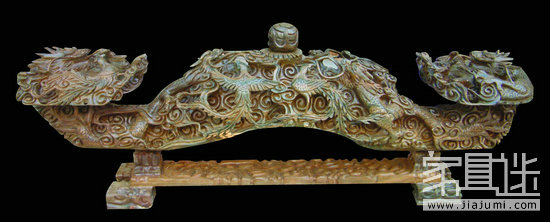Wood enthusiasts who have visited the mahogany handicraft market, the wenwan market, night markets, or small stalls might have come across a collection of hand-carved strings and combs made from a light green wood. In the hands of the vendors, this material is often referred to as "green sandalwood." Crafts made from green sandalwood feel solid and heavy, with a rich, sandalwood-like fragrance that can be quite distinctive. Intuitively, one might expect these items to be expensive, but in reality, they are usually very affordable—often just a few yuan for a simple bracelet or comb. Some even cost only a dozen yuan! When people first learn about the low price, many suspect that the sandalwood scent is artificially added, like a mix of sesame oil or synthetic fragrance. However, the truth is more complicated: in most cases, the fragrance is indeed natural, coming from the wood itself. Related reading: A quick guide on how to care for green sandalwood So what exactly is "green sandalwood"? In online discussions and among industry insiders, it's sometimes called "more sore wood" or "Vera wood." Despite its name, it doesn't resemble traditional sandalwood in appearance or texture. Green sandalwood was introduced to the Chinese market in the late 1990s. It quickly gained attention due to its strong aroma and dense, hard texture similar to sandalwood. However, despite its initial appeal, it has remained mostly confined to small crafts and street vendor stalls. After talking to some manufacturers, I found out that green sandalwood initially generated a lot of interest when it first entered the domestic market. Around 2005, some furniture makers in Dongyang tried to use it for making furniture, but the material proved difficult to work with. Issues like cracking and warping made it unsuitable for large-scale production, leading to its limited use. Some people really enjoy the strong, unique scent of green sandalwood, while Others find it too overpowering or not as refined as traditional sandalwood. The "richness" of the fragrance is appreciated by some, but others believe it lacks the depth and stability of true sandalwood. The rise of a new type of wood depends on its overall quality. It needs to have standout features without major drawbacks. Otherwise, it will struggle to gain widespread acceptance. It seems that the reason why woods like pear, rosewood, and red sandalwood have become popular is not just luck—it’s because they offer superior qualities without significant flaws. Green sandalwood, while interesting, still has a long way to go before it can truly take its place in the mainstream. False Nails Professional,Short False Nails,Wide False Nails,Types Of False Nails,False Finger Nails China Xuchang Wig Co., Ltd , https://www.hairxuchang.com


